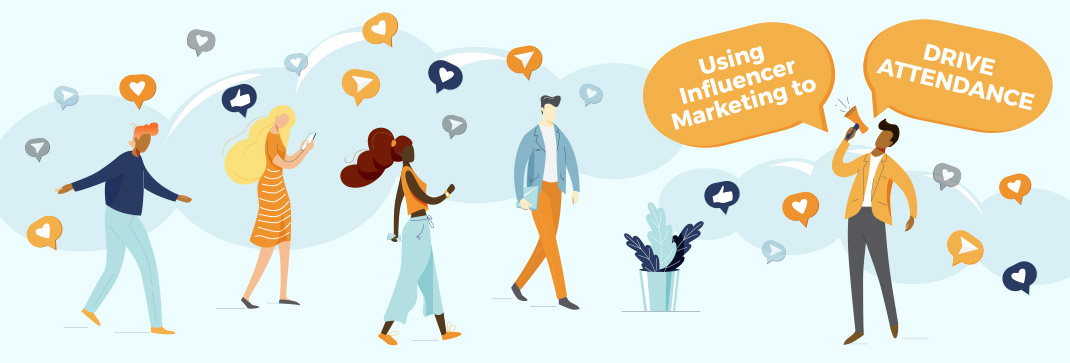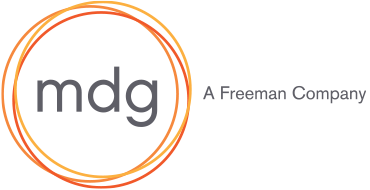
Good news and bad news: Fortunately, many of the industries or professions our events serve are teeming with influencers. Unfortunately, the potential to harness their clout to grow audiences is going unrealized. Follow this influencer-marketing advice to cut through promotional clutter, add credibility to your next campaign, and ultimately drive attendance, whether your event is in-person, digital, or a mix of both.
Amplify the voices of attendee loyalists.
An event’s loyal attendees are often the most qualified and authentic influencers. While some may not have a robust social media following, unpaid words of positivity from attendees can resonate with like-minded professionals and cultivate trust in prospects. In a recent campaign for a large food service trade show, mdg conducted interviews with professionals who had regularly attended the event. Testimonials from big buyers and executives from renowned brands like The Coca-Cola Company were highlighted across the social media campaign, illustrating the event’s value in the words of industry peers.
Make it easy (or even, required) for event speakers to promote their event participation.
The thought leaders who are speaking at an event should be essentially handed a megaphone to promote their involvement. For a large technology show, mdg worked with the internal programming team to develop influencer promotional language add-ons for existing event speaker contracts. We then managed the creation of event speaker content and testimonials, which were leveraged across an omnichannel attendee acquisition campaign.
Don’t overlook employee advocates.
Employee advocates can drive loyalty, amplify visibility, increase lead quality, boost web traffic and encourage engagement—particularly on LinkedIn, where B2B content tends to have the most relevancy. In fact, LinkedIn reports that content shared by employees earns twice the engagement of content shared by companies. mdg put that to the test by running an employee advocacy platform in 2020. We found that LinkedIn’s claim was spot-on, with posts from our employees earning 240 percent more clicks than what the company page earned.
Think beyond social media.
Events that confine their influencer marketing efforts to organic social media miss out on influencer ROI. Best practice is to treat influencer-created content and testimonials as “ROI amplifiers” and ensure they are thoughtfully integrated into omnichannel attendee acquisition campaigns, including press releases, emails, display ads, social media ads and more. For one of the events we market, an email highlighting influencer testimonials earned over twice the average conversions. It’s wise to view influencer marketing not only as an awareness tactic, but also as a conversion driver.
Compensate your influencers appropriately.
Influencers can provide an attendee acquisition campaign with significant ROI and it’s important that they are appropriately compensated for their work. While prominent influencers will likely require cash for their services, nano- and micro-level influencers will often see value in partnering for exposure and cross-promotion. Ask what their objectives are and think creatively about what your event can offer to help achieve them. Can you offer free VIP event passes, areas on the show floor for attendee meet-and-greets or book signings, event speaking engagements, or cross-promotion? Would any of your sponsors/exhibitors be willing to co-sponsor influencers and share costs? Think about your options before you start the conversation—you might be pleasantly surprised with where you land.
A version of this article originally appeared in PCMA Convene.


